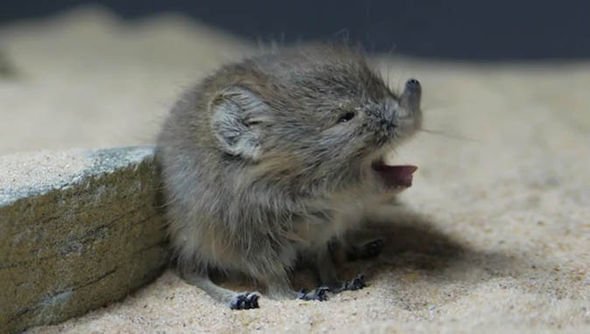
Shrews are often overshadowed by larger animals, but they have unique features that help them navigate tough environments, from frigid winters to dry spells. So, how do these minuscule mammals survive when times get tough? In this article, we’ll explore the fascinating ways shrews have adapted to make it through some of nature’s most unwelcoming challenges.
Understanding Shrew Habitats
Shrews can be found in various habitats around the world, from dense forests to open fields. They thrive in places that provide shelter and food sources, including insects and plants. Predominantly, you’ll find them in areas rich in moisture, like woodlands, grasslands, and wetlands. However, some species have managed to adapt to drier environments too.
These little creatures are often camouflaged, blending perfectly with their surroundings. It’s like they have a built-in disguise! Their brown fur helps them hide from predators while they scurry through underbrush and leaf litter. With an extraordinary sense of smell and hearing, shrews navigate their habitats effectively. Yet, they also face dangers from larger predators, like owls and foxes.
Insulating Fur and Body Heat
One of the most critical adaptations for shrews is their fur. It’s not just for looks! Shrews have dense fur that serves as a protective layer against the cold. Think of it as their cozy winter coat. This insulation helps them maintain their body temperature, even when the temperature drops. In harsh environments, maintaining warmth is essential for survival.
Additionally, shrews have a high metabolic rate, which means they burn energy quickly. This rapid metabolism requires them to eat frequently. They often consume their body weight in food daily! This constant feeding helps generate body heat, keeping them warm and active.
Behavioral Adaptations to Survive
Shrews are known for their unique behaviors that contribute to their survival. From creating intricate burrow systems to foraging for food, these behaviors are essential. They dig tunnels in the ground, which not only provide shelter but also protect them from extreme weather conditions.
During the winter, shrews may create a network of tunnels beneath the snow, allowing them to travel in search of food without exposing themselves to the harsh elements above. This clever strategy helps them avoid predators while maximizing their chances of finding insects or seeds.
Diet and Feeding Habits
Speaking of food, shrew diets play a significant role in their survival. They’re insectivores, which means they primarily eat insects, worms, and small invertebrates. However, some shrew species are known to eat plants and fruits, giving them a bit of dietary flexibility.
In tough times, shrews can alter their feeding habits to make the most of what’s available. For example, during dry spells, they might switch to foraging for roots or fallen fruits. This ability to adapt their diet helps them survive when their primary food sources are scarce.
Hydration in Harsh Climates
Finding water can be a challenge for small mammals like shrews, especially in dry environments. Luckily, shrews have developed unique ways to stay hydrated. They often get the moisture they need from the food they consume. Insects and other small creatures contain enough water to keep them hydrated, so as long as they have a steady supply of food, they can avoid dehydration.
In some cases, shrews may also dig down into the soil to find moisture-rich areas. It’s like having a built-in water cooler! This behavior is crucial during hot, dry conditions when surface water is limited.
Reproductive Strategies for Survival
Reproduction plays an essential role in the survival of shrews, especially in harsh environments. Many species of shrews have short gestation periods, often lasting only about three weeks. This quick turnaround means they can have multiple litters in a single breeding season.
The timing of their reproduction often coincides with food availability. When conditions are just right, shrew populations can explode, ensuring there are plenty of new individuals to adapt and thrive. In tough times, having a higher number of offspring increases the chances that some will survive, even if resources are strained.
The Role of Social Behavior
While many shrew species are solitary, some exhibit social behaviors that can aid in survival. For instance, certain shrews will form small groups to forage together. This behavior can increase their efficiency in finding food, especially when resources are limited.
Additionally, social behaviors can help shrews deter predators. When you have a few friends around, there’s safety in numbers. Observing and warning each other of potential dangers can increase their survival rates.
Shrews may be small, but they are remarkable creatures that demonstrate the power of adaptation. From their insulating fur and clever feeding habits to their reproductive strategies and social behaviors, shrews have honed their skills to survive even in the harshest conditions.
These little mammals remind us that survival isn’t just about size or strength; it’s about being resourceful and adaptable. So, the next time you see a shrew darting across the ground, take a moment to appreciate their incredible journey through life. They’ve mastered the art of thriving against the odds, with a blend of unique traits that allow them to face whatever Mother Nature throws their way.
